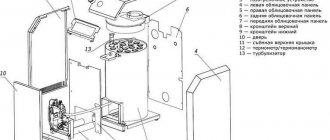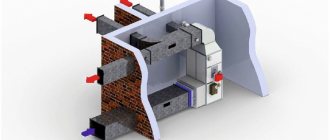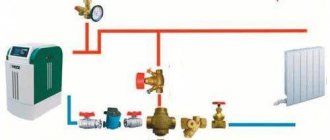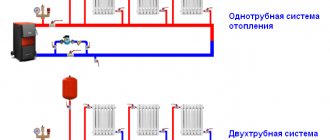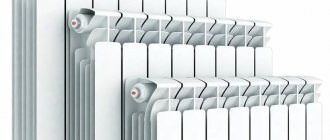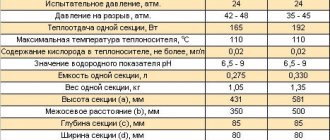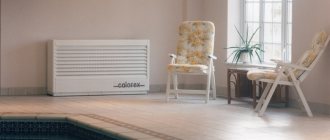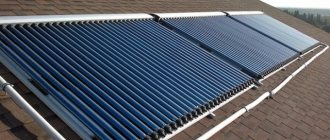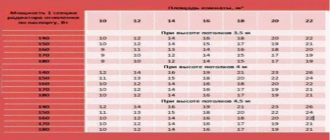- home
- >Alternative electricity - articles
>
Welcome to the website e-veterok.ru
, today I want to tell you about how many solar panels you need for a house or cottage, a private house, etc. This article will not contain formulas or complex calculations, I will try to convey everything in simple words that are understandable to any person. The article promises to be quite large, but I think you will not waste your time, leave comments under the article.
The most important thing to determine the number of solar panels is to understand what they are capable of, how much energy one solar panel can provide, in order to determine the required quantity. You also need to understand that in addition to the panels themselves, you will need batteries, a charge controller, and a voltage converter (inverter).
Calculation of solar panel power
To calculate the required power of solar panels you need to know how much energy you consume.
For example, if your energy consumption is 100 kWh per month (readings can be viewed on the electricity meter), then accordingly you need solar panels to generate this amount of energy. The solar panels themselves produce solar energy only during daylight hours. And they deliver their rated power only when there is a clear sky and the sun's rays are falling at right angles. When the sun falls at angles, power and electricity production drops noticeably, and the sharper the angle of incidence of the sun's rays, the greater the drop in power. In cloudy weather, the power of solar panels drops by 15-20 times, even with light clouds and haze, the power of solar panels drops by 2-3 times, and all this must be taken into account.
When calculating, it is better to take the working time, during which the solar panels operate at almost full power, equal to 7 hours, this is from 9 am to 4 pm. Of course, in the summer the panels will work from dawn to dusk, but in the morning and evening the output will be very small, in volume only 20-30% of the total daily output, and 70% of the energy will be generated in the interval from 9 to 16 hours.
Thus, an array of panels with a capacity of 1 kW (1000 watts) will produce 7 kWh of electricity during the period from 9 to 16 hours on a sunny summer day, and 210 kWh per month. Plus another 3 kW (30%) for the morning and evening, but let this be a reserve since partly cloudy weather is possible. And our panels are installed permanently, and the angle of incidence of the sun's rays changes, so naturally the panels will not deliver their power at 100%. I think it’s clear that if the array of panels is 2 kW, then the energy production will be 420 kWh per month. And if there is one 100-watt panel, then it will provide only 700 watt-hours of energy per day, and 21 kW per month.
It’s not bad to have 210 kWh per month from an array with a capacity of only 1 kW, but it’s not that simple
Firstly
It’s not possible that all 30 days in a month are sunny, so you need to look at the weather archive for the region and find out approximately how many cloudy days there are by month. As a result, probably 5-6 days will definitely be cloudy, when solar panels will not generate half of the electricity. This means you can safely cross out 4 days, and the result will no longer be 210 kWh, but 186 kWh
Also
you need to understand that in spring and autumn the daylight hours are shorter and there are much more cloudy days, so if you want to use solar energy from March to October, then you need to increase the array of solar panels by 30-50%, depending on the specific region.
But that is not all
, there are also serious losses in the batteries and in the converters (inverter), which also need to be taken into account, more on this later.
About winter
I won’t say that for now, as this is a very deplorable time for electricity generation, and then when there is no sun for weeks, no array of solar panels will help, and you will either need to be powered from the network during such periods, or install a gas generator. Installing a wind generator also helps well; in winter it becomes the main source of electricity generation, but unless, of course, your region has windy winters, and the wind generator is of sufficient power.
What's Included in a Solar Panel System Kit
To obtain current, it is not enough to purchase solar panels and connect them. The solar system consists of many equally important technical devices that create the desired effect. So, in order for your home to have eco-friendly electricity, in addition to solar panels, you will need to purchase 6 more basic elements of the system, namely:
- generator;
- inverter;
- battery;
- solar charge controller;
- consumer 230V;
- connecting box.
Therefore, before you start designing the installation and placement of a photovoltaic system, you must understand that it is much more expensive than purchasing solar panels alone. The service life and efficiency of the selected elements will depend on the number of modules, class and manufacturer. Correctly selected technical characteristics, reliability of the device and location of solar panels will be the key to high-quality work and durability.
Calculation of battery capacity for solar panels
This is what a solar power plant looks like inside a house
>
Another example of installed batteries and a universal controller for solar panels
>
Minimum battery capacity
, which simply must be like this in order to survive the dark time of the day. For example, if you consume 3 kWh of energy from evening to morning, then the batteries should have such a reserve of energy.
If the battery is 12 volts 200 Ah, then the energy in it will fit 12 * 200 = 2400 watts (2.4 kW). But batteries cannot be discharged to 100%
. Specialized batteries can be discharged to a maximum of 70%; if more, they quickly degrade. If you install regular car batteries, they can be discharged to a maximum of 50%. Therefore, you need to install twice as many batteries as required, otherwise they will have to be replaced every year or even earlier.
Optimal battery capacity reserve
This is the daily energy reserve in the batteries. For example, if your daily consumption is 10 kWh, then the working capacity of the battery should be exactly this. Then you can easily survive 1-2 cloudy days without interruptions. Moreover, on ordinary days during the day the batteries will only be discharged by 20-30%, and this will extend their short life.
Another important thing to do
This is the efficiency of lead-acid batteries, which is approximately 80%. That is, when a battery is fully charged, it takes 20% more energy than it can later release. The efficiency depends on the charge and discharge current, and the higher the charge and discharge currents, the lower the efficiency. For example, if you have a 200Ah battery, and you connect a 2kW electric kettle through an inverter, then the voltage on the battery will drop sharply, since the battery discharge current will be about 250Amps, and the energy efficiency will drop to 40-50%. Also, if you charge the battery with a high current, the efficiency will sharply decrease.
Also, the inverter (energy converter 12/24/48 to 220V) has an efficiency of 70-80%.
Taking into account the losses of energy received from solar panels in batteries, and in converting direct voltage into alternating voltage 220V, the total losses will be about 40%. the array of solar panels must also
to compensate for these losses.
But that's not all the losses
.
There are two types of solar battery charge controllers, and you can’t do without them. PWM (PWM) controllers are simpler and cheaper, they cannot transform energy, and therefore solar panels cannot transfer all their power to the battery, a maximum of 80% of the rated power. But MPPT controllers monitor the maximum power point and convert energy by reducing the voltage and increasing the charging current, ultimately increasing the efficiency of solar panels up to 99%. Therefore, if you install a cheaper PWM controller, then increase the array of solar panels by another 20%
.
How does a solar power plant work?
We're not going to waste your time by telling you how semiconductor modules generate current. But if you want to organize solar heating of a private home, you need to understand the operating principle of a photovoltaic station and know all the nuances that affect its power.
A solar power plant (SPP) consists of the following elements (shown in the diagram below):
- one or more panels that perceive solar radiation;
- rechargeable batteries (AB) that store the generated electricity;
- the controller monitors the charge level and directs the current to the desired circuit;
- The inverter converts the direct voltage of solar panels into alternating current 220 V.
Interesting point. The price of modules is no more than 30% of the cost of a complete set of equipment. The remaining 70% is batteries, inverter unit and controller. The components are selected for one operating voltage of 12, 24 or 48 volts.
Diagram of a solar installation with an inverter and controller.
Let us briefly explain the algorithm of the system’s operation:
- During daylight hours, the batteries generate current that passes through the controller.
- The electronic unit assesses the battery charge level, then directs the energy to the desired line - for charging or to consumers (to the inverter).
- The inverter unit converts direct current into alternating current with standard parameters - 220 V / 50 Hz.
There are 2 types of controllers - PWM and MPPT. The difference between them is the method of charging the power supply elements and the amount of voltage loss. MPPT units are more modern and economical. There are different types of batteries used: lead-acid, gel, and so on.
The SES includes special batteries that are not afraid of deep discharge
If you plan to use several modules, they are connected to each other in 3 ways:
- The parallel connection circuit allows you to increase the current in the circuit. The “negative” contacts of all batteries are connected to one line, the “positive” ones to the other. The output voltage remains unchanged.
- The use of a series circuit makes it possible to increase the output voltage. The “negative” terminal of the first panel is connected to the “plus” of the second and so on.
- The combined method is used when you need to change both parameters - current and voltage. Several modules are connected in series, then the group is connected to a common network in parallel to other similar groups.
A master electrician will tell you in the video what solar panels for a home and related equipment look like:
Calculation of solar panels for a private house or cottage
If you don’t know your consumption and are just planning, say, to power your dacha from solar panels, then consumption is calculated quite simply.
For example, you will have a refrigerator in your dacha, which according to its passport consumes 370 kWh per year, which means it will consume only 30.8 kWh of energy per month, and 1.02 kWh per day. Also light, for example, your light bulbs are energy-saving, say 12 watts each, there are 5 of them and they shine on average 5 hours a day. This means that per day your light will consume 12*5*5=300 watt*h of energy, and in a month it will “burn up” 9 kWh. You can also read the consumption of a pump, TV and everything else you have, add everything up and get your daily energy consumption, and then multiply by a month and get some approximate figure. For example, you get 70 kWh of energy per month, add 40% of the energy that will be lost in the battery, inverter, etc. This means that we need solar panels to generate approximately 100 kWh. This means 100:30:7 = 0.476 kW. It turns out that you need an array of batteries with a power of 0.5 kW. But such an array of batteries will only be enough in the summer; even in spring and autumn on cloudy days there will be power outages, so it is necessary to double the array of batteries.
As a result of the above, in brief, the calculation of the number of solar panels looks like this:
- accept that solar panels only work for 7 hours in summer at almost maximum power
- calculate your electricity consumption per day
- Divide by 7 and you get the required power of the solar array
- add 40% for losses in the battery and inverter
- add another 20% if you have a PWM controller, if MPPT then you don’t need it
Example: Consumption of a private house 300 kWh per month
, divide by 30 days = 7 kW, divide 10 kW by 7 hours, you get 1.42 kW. Let's add to this figure 40% of losses on the battery and in the inverter, 1.42 + 0.568 = 1988 watts. As a result, to power a private house in the summer, you need a 2 kW array. But in order to receive enough energy even in spring and autumn, it is better to increase the array by 50%, that is, another plus of 1 kW. And in winter, during long cloudy periods, use either a gas generator or install a wind generator with a power of at least 2 kW. More specifically, it can be calculated based on weather archive data for the region.
How to choose the remaining components of the system
Mandatory components for the operation of a solar battery are an inverter and a battery, as well as fastenings for solar panels. To provide the house with energy and ensure proper operation of the system, when choosing them, it is also necessary to take into account certain technical characteristics.
Selecting battery capacity
Why do you need to choose battery capacity? The solar panel produces energy, which is stored in a battery, to perform three important functions:
- compensate for periods of bad weather and continue to supply electricity to your home;
- cover peak load;
- provide electricity to a private home at night.
Today there are no problems with choosing a battery; the industry produces a variety of models for backup power systems that are perfect for a solar battery. But a problem may arise if the capacity of one battery is not enough for a large number of modules, so it is very important to choose the right solar battery taking into account the energy consumption and technical characteristics of the device. For example, a 12V battery with a capacity of 100Ah (amp/hour) can store 1200Wh. But the battery cannot store so much energy all the time, since its performance directly depends on charging and intensity of use. Experts advise making calculations so that the size of the battery allows you to save energy for at least 4 days. In more understandable terms: let’s imagine the need at home at 3600 Wh per day, now we divide this figure by a voltage of 12 W, after which we get a daily rate of 300 A*h. That is, for 4 days of uninterrupted operation we need a charge of 1200 A*h.
Batteries for solar panels
Before purchasing and choosing the type of battery, keep in mind that a lead battery requires 20% more than the calculated value, since it is not advisable for it to be completely discharged. But, for example, for a cadmium-nickel battery an additional 20% will be required. The same rule applies to iron-nickel. You can rest assured about alkaline ones, since completely discharging the battery does not harm their service life and overall performance.
In order for the battery to last the stated period and not be subjected to overvoltage or, conversely, deep discharge, it is necessary to use a high-quality controller.
Inverter selection
With the help of an inverter, the constant energy received by the panels from the sun is converted into alternating energy with an increase in voltage to 220V, necessary to meet household needs. Inverter power starts from 250 W and can reach 8000 W. The best option is an inverter with a power of 3000 W, which is capable of servicing several parallel modules at once. Experts advise choosing three-phase sine wave inverters for your home. They are distinguished by reliability, high quality and long service life. In addition, they can also serve as a “buffer” for releasing excess solar electricity into the general grid.
Cost of solar panels and batteries
>
Prices for solar panels and equipment now vary quite a lot, the same product can differ in price significantly from different sellers, so look cheaper, and from time-tested sellers. Prices for solar panels are now on average 70 rubles per watt, that is, an array of 1 kW batteries will cost about 70 thousand rubles, but the larger the batch, the greater the discounts and cheaper delivery.
High-quality specialized batteries are expensive; a 12V 200Ah battery will cost an average of 15-20 thousand rubles. I use these batteries, they are written about in this article. Batteries for solar panels Car batteries are half the price, but they need to be installed twice as much so that they last at least five years. Also, car batteries cannot be installed in residential areas as they are not sealed. Specialized ones with a discharge of no more than 50% will last 6-10 years, and they are sealed and do not emit anything. You can buy cheaper if you take a large batch; sellers usually give decent discounts.
The rest of the equipment is probably individual; inverters vary in power, sine wave shape, and price. Likewise, charge controllers can be as expensive as they come with all the functions, including communication with a PC and remote access via the Internet.
Highest power ratings
Today there are many expensive and cheaper models of solar panels on the market. They all differ in brand, price and technical characteristics. One of the most important indicators is power. As we have already said, the amount of energy generated depends on it. The higher it is, the more. Therefore, if you want to provide all the electrical needs of your home, choose solar panels with a high power rating. Powerful modules include batteries, where this indicator ranges from 250-300W and above. Another important point is the choice of tables for solar panels.
The most efficient panels
Below we have collected for you the most efficient solar panels from well-known manufacturers, where the power rating is over 300W.
LG 315 N1C-G4 NeON™2
LG is a well-known South Korean company that, in addition to various types of equipment, also produces solar panels. The modules are of high quality and power – 315W. Among all manufacturers in the photovoltaics market, LG can easily be considered a leader. Firstly, this is due to the high percentage of efficiency, and secondly, to the use of advanced technologies for production, which makes solar panels not only high-quality, but also durable.
The complexity of the technological process lies not only in production, but also in the assembly of the module. Each plate is carefully inspected and tested to detect any abnormalities or damage. After their examination, each cell undergoes a liquid alkali etching stage before release. The result is dark black modules with a three-layer EVA coating and reflective film.
LG NeON™ 2 is a monocrystalline battery type. They are made with silicon coating on both sides. Thanks to special technology, they not only actively generate energy, but with the help of a special coating they are able to increase the generation of free particles, which as a result leads to greater generation of electric current. That is, solar energy is generated not only by one side of the photocoated module, but by two at the same time, thereby increasing the power of the system.
BenQ SunForte 333 PM096B00
Another worthy representative in the solar battery market is BenQ Solar. A Taiwanese company that is also distinguished by its quality products not only in the world of technology, but also in the field of photovoltaics. The company specializes in helium modules with a power of 333 W and an overall efficiency of up to 20.5%. The SunForte PM096B00 solar panel is presented in dark black color and is enclosed in an anodized aluminum profile.
In terms of power, the solar battery presented by BenQ is recognized as one of the most productive. This is primarily due to the special return-contact technology, which increases power generation even with batteries with a small area and low solar radiation, thereby saving both on space and on the number of modules. Engineers are constantly working to increase overall efficiency and introduce new advanced technologies, all because the company has its own research and development base.
If you want to know more about the SunForte PM096B00 solar panels, they, with their quite compact dimensions, produce several times more energy than standard modular systems. The solar panel cells are covered with a three-layer EVA film, and its surface is protected by shockproof glass, which has an anti-reflective effect. These are the special advantages that solar panels from a Taiwanese company have. It is also worth noting that the battery complex includes connecting cables, a junction box with multifunctional action and bypass diodes.
Based on the studies conducted, power loss rates were recorded, which amounted to only 13% over 25 years of operation. The data provided indicates a high-tech process and the use of high-quality materials.
Rating of solar panels by power
NeON™ 2 BiFacial
Another option for helium solar panels is NeON™ 2 BiFacial from the South Korean company LG. This battery can be classified as a new product, in which engineers tried to introduce only the latest developments. The solar cell even won an award at a product show for double-sided gel panels, largely due to the introduction of Cello Technology™. Its essence lies in the special ability to redirect current-carrying paths to the module output. That is, now the generated solar energy is distributed over 12 thin conductors and thereby reduces current losses, accordingly increasing the efficiency of the solar battery in comparison with other panels operating using traditional methods.
Today, NeON™ 2 BiFacial is the only solar cell whose technical specifications indicate a nominal power of 375 W, and a maximum confirmed power of 400 W. It can safely be called the most powerful. In addition, due to transparent photocells that actively collect sunlight and generate it, the panel’s operating efficiency reaches the highest levels, since not only particles captured by the module, but also reflected particles participate in the current conversion. Additionally, you can get up to 30% energy.

